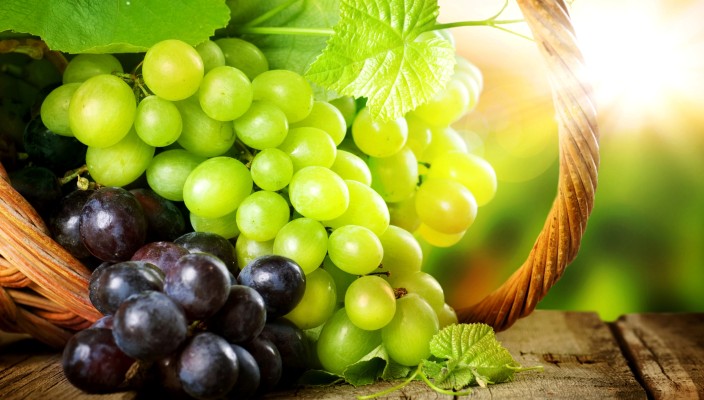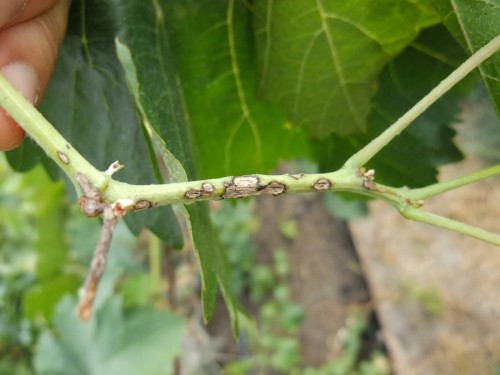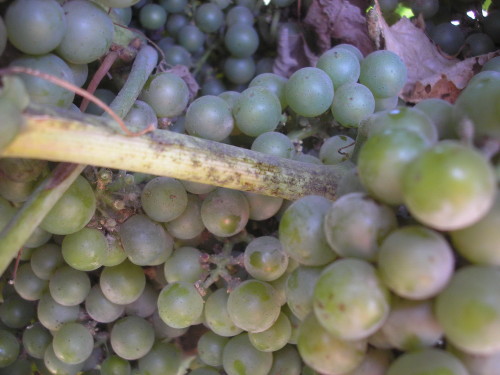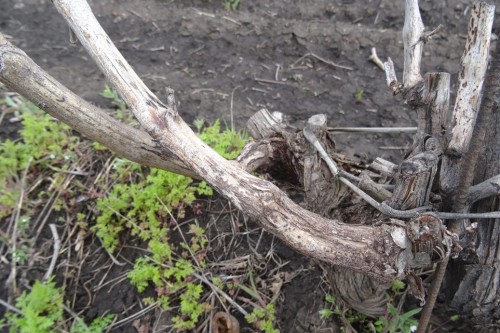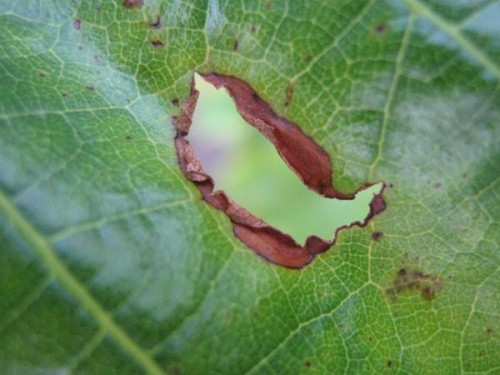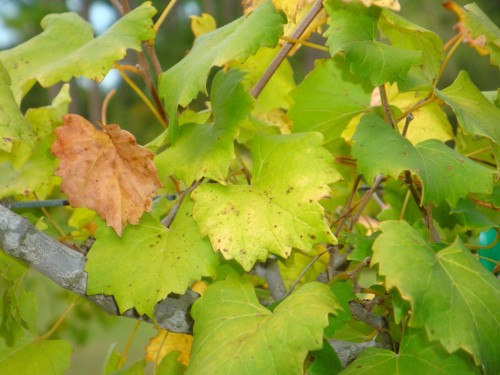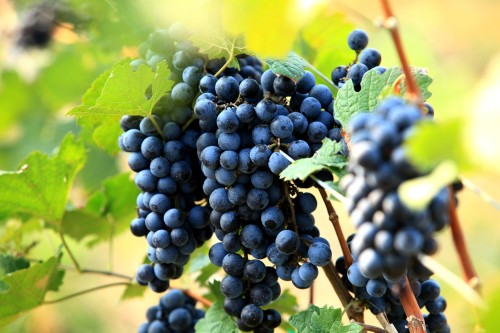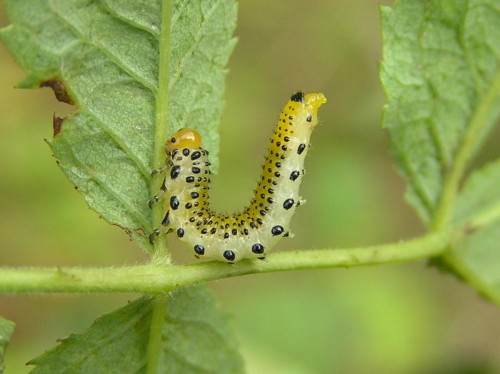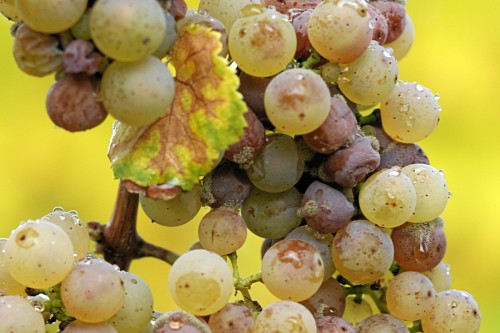To have your vineyard always pleased excellent crop of sweet and fragrant berries, you need to work hard, because all sorts of diseases of grapes in the two accounts will be able to deprive you not only pleasure, but also peace of mind. Below talk about the most common diseases affecting fruit-bearing plants, and discuss how to deal with them properly.
Content
There are different and quite effective treatments for vineyards, however, is much easier to simply avoid infection, and a better doctor than prevention does not exist. Most of the harmful bacteria has the ability to spread very quickly, destroying everything in its path, like leaves and berries. Therefore, we can be late with the treatment and to lose not only the harvest without a trained eye, but the whole vineyard.
Grape Diseases: Types
If you are young grapeworks and still do not know how to independently determine the diseases of the grapes, it is easily possible to learn this skill, reviewing a number of photos on specialized resources for dacities. Illustrations affected by diseases of leaves and lian plants in photographs show quite detailed by signs of one or another vineyard's disease.
Mildu and ways to combat false torment dew
- Infection Mildheu mushrooms usually occurs during the growing season. Increased humidity of the fungi contributes to the rapid spread of mushrooms. Mushrooms are striking as leaves, so inflorescences. A bright distinctive feature of the development of the fungal disease of the vineyard is the appearance of a whitic plaque on the surface of the foliage. The diseased sections either quickly dry, or rot.
- The most dangerous time to defeat the vineyard is Mildu - this is May and the beginning of the summer. At this time, the mushrooms are just passing the incubation period, and the high seasonal moisture content of the soil and the air temperature contribute to the rapid development of this disease.
- Milday mushrooms are losing winter in the soil, and with spring rain drops or the first gusts of the wind fall on the wokeered plants. The bacteria are very fruitful and grow rapidly, the population of its species slows down only with significant temperature indicators or along with the dead vines.
- In order to prevent the heavy consequences for the vineyard when the torment is infected with a torment, it is necessary to gour out a plot on time, to ensure the ventilance of the vineyard and spray the Bordeaux fluid.
- Already an infected bush or a separate vine is extremely difficult to cure, try to prevent the fungus spread.
Bacterial Grape Cancer
- Bacterial grape cancer is practically no treatment, so only competent prevention will save your vines and harvest from this severe disease.
- Buying seedlings, carefully examine the root system for the presence of burglar growths. This may well be a beginnie tumor of bacterial cancer. I think it is not necessary to explain that such seedlings can not be what to buy, not even try to plant.
- If you find a suspicion of a diseased plant on a plot with a vineyard, you will have to break up quickly and ruthlessly. Otherwise, you risk losing not a separate bush, but the entire vineyard. Moreover, on the site of a remote affected bush is not recommended to plant a new young plant for several more years.
- Most often the disease affects plants during routine pruning, so carefully treat the working surface of a tool solution of manganese.
- Cancer is gradually spreading to the whole bush, the danger lies in the fact that his symptoms for a long time can not be seen visually. It all starts with the fall of the yield of the vineyard or individual vines. Bush gradually weakened, and already then there are cancerous growths and plant inevitably dies.
- Other than buying already infected seedlings, the disease can develop in a vineyard with the introduction of the pathogens directly into the soil, for example, during its processing, the period of vaccination, with cuttings or pruning.
Odium and methods of dealing with the disease
- Odium, among gardeners and lovers called ashtray, associated with the ashes thanks to a touch of dark gray color, which is characterized by persistent putrid odor.
- Conducive to the rapid development of the disease areas of the plant with the lack of sunlight and hot, dry weather. This is a fungal disease, which inevitably affects the grapes and it leads to their shrinkage. They cease to grow in size, the skin becomes hard and cracked berries.
- In winter, the fungus thrives and is stored in the incubation period in infected buds and twigs of grapes, and with the onset of heat quickly spreads throughout the plant.
- To combat this type of fungus, there are several effective drugs, such as strobe, Vectra, Quadris, Flint and Topaz. To bring disease to the vineyard vine to be treated 1.5% solution of colloidal sulfur. Such manipulation of shrubs should be done at least 4 times a season. For the first time until the grapes had not yet blossomed, the second time - immediately after flowering and again after a month and in early August.
- Usually odiumom vineyards affected as a result of hot, dry weather. This advantageously middle or late summer. Particularly active fungus grows as a result of the sharp change of weather from dry to too moist.
Eskorioz: struggling with blackspot
- Eskorioz or blackspot also relates to fungal diseases, causing irreparable damage to the vineyard. This disease manifests itself with the arrival of the summer season. During this period, the vines are formed distinct black spots, which rapidly increase in size and infect grape vines one by one.
- Oval dark spots on the leaves are formed a characteristic white border. Berries affected by this ailion are painted in a dark purple color and acquire an unpleasant taste.
- Often escoriosis, starting on weak young vines, gradually applies to reprehensive and strong shrubs. The bark begins to rot, and the plant loses its strength and slowly dies.
- The vine-sick black vine is poorly treatable, often easier to quickly remove from the vineyard. Also reduce the intensity of the dissemination of the disease will help the EUPAREN fungicide solution.
Antraznosis - Malicious fungus
- Disputes of these bacteria are striking an exceptionally young green foliage of grapes, namely shoots, inflorescences and clusters.
- Illuminated foliage is covered with characteristic brown spots, with time increasing. They become brown, occurs necrosis of green fabrics, and holes appear in the leaves. At the same time, brown or purple stains with dark bodies appear on grapes.
- The harm from the antractose is manifested in reducing the productive area of \u200b\u200bthe leaves. The affected foliage is falling, the sick shoots die, and the berries become sour taste, because they lack sugar.
- Plants, which in the demi-season period are sick with an intermission, poorly tolerate wintering and drought.
- Methods of struggle are the removal of affected leaves and vines, which are immediately burned. Including after the selection of infected bushes, it is important to ensure sufficient ventilability of the remaining vineyard plants.
- You can deal with anthracnose by the same means that are used during the treatment of grapes from Mildu.
Chlorosis of the vineyard
- This disease arises as a result of metabolic disorders in plants. Basically, this is due to unsuitable for the grapes of soil.
- The foliage on the bushes is quickly yellowing, and the lianas are poorly growing. A significant plants lesion area leads to his death.
- Usually, chlorosis affects the vineyards, broken on the ground with an increase in the increasing amount of lime, or on too wet soils.
- To normalize the situation, experimental grapes are carried out drainage measures for drywater drying. If the composition of the soil has an excess of lime, then its processing is carried out by antihlorosine. It is poured directly deep into the wells, a depth of 40 cm, which makes near every vineyard bush. Usually, 5 liters of diluted means are enough to the average number of plants, but if the bushes are quite powerful, it is possible to increase the dose at discretion. The leaves and branches of the bushes are necessarily sprayed with the same solution.
- Poor soils in order to avoid chlorosis necessarily fertilize.
- To get acquainted in detail and in detail with various diseases of grapes, see what the affected leaves and vines look like, you can consider numerous video reviews of their ailments. On the video, it is also shown in detail the step by step, as preparing solutions for planting plants, and how to spray vines to chemicals.
Preventive grape procedures
- I hope you have convinced that vineyard diseases have difficult consequences, which are difficult to get rid of. The struggle for the harvest is complex and requires a lot of effort. The best prevention of all the above-described diseases and pledge of vineyards will be precisely measures to prevent infection.
- It is still necessary to start such a process before the awakening of the kidneys.
- After removing the shelter from the branches overwhelmed, process them with 3% mortar of the bordeaux liquid. To do this, it is enough to add 300 g of copper mosper on the water bucket of 5 liters. Simultaneously with this, in another bucket of the same litter, divert 300 g of fresh lime. Connect both solutions, and the fluid with copper vitrios is poured into lime milk, and not vice versa.
- Properly cooked solution can be checked by an ordinary iron nail. When it is dipped into the solution, copper should not be seen on it.
- When everything is ready and checked, strain the composition and pour into the sprayer. It is necessary to irrigate everything without exception and necessarily on all sides, and young and old vines from the roots to the most tips.
Vintage: Fighting and their appointment
- Preparations for preventing diseases on vineyards are biological and chemical. The others are also used with equal success.
- Biological means include: lepyocide, tripides. Haouxin and actors to effectively help destroy bacteria. Their advantage is the lack of intoxication for a person, however, these drugs are quite expensive, and work with their use is quite laborious for the owners of large plant plantations.
- More efficiently and more practical by the price of the use of chemicals and pesticides both in order to prevent and as measures to combat the recovery of vines. Choosing a drug from numerous funds in the chemical market, pay attention to their harmlessness for grape leaves and berries, small toxicity for humans and slaughter power for pathogens.
- Classification of Pesticides in the direction of action:
- fungicides - kill fungi;
- bactericides - Fighting pathogenic bacteria;
- insecticides - destroy insects;
- acaricides - fight ticks;
- herbicides - destroy the weed grass.
- Chemicals are contact, systemic and combined.
- The systemic includes drugs to combat disease. From the surface of sprinkled leaves, the medicine penetrates inside and together with juices saturates all the plant, including new shoots.
- The systemic drugs include chemicals such as Topaz, Fundazole, Topcin-M, Bayleton and strobe.
- Contacts are called funds that are processed only by green elements of the plant. The most widely used pesticides of this type are rochel, Bordeaux liquid and Omaith.
- Combined are drugs that combine the properties of the first two. The most common of them is Ridomil Gold.
- There is an infinite number of medicines against diseases and pests of grapes before using any of them, remember that pests can adapt to a changing medium, so periodically change the means of treatment and prevention, and you need to choose an alternative from another group.
Folk remedies for combating grape diseases
In addition to viral and bacterial infections, vintage vintage berries like various pests. Part of the crop every year is lost due to adverse weather conditions, to which grape vine is very picky. In addition to chemicals, there are also folk methods that help save the vines and bushes from infection, minimizing crop losses.
Puffy dew
It is possible to fight with mildewa dew in the following compositions.
Means 1.
- Navimorate the grass and fold it in a dark wet place until the hay acquires gray and pronounced mold.
- Place all obtained into the container and fill with water. Mix well and strain.
- Spray the bushes with the resulting liquid in order to prevent parasites.
- This procedure can be periodically repeated all summer.
Means 2.
- Take about 2 - 3 kg of pure cow's litter. Fill all this bucket of water and leave for a couple of days.
- When the composition feels, all strain and mix with a teaspoon of urea.
- Spray the foliage necessarily from the back and inside.
Means 3.
- Divide 5 g of manganese powder in a bucket of water.
- Spray the coarse and vines with the resulting solution.
Means 4.
- Make a solution for spraying from 1 l of lactic serum or milk on 5 liters of water.
- Spray the vineyard monthly.
Means 5.
- Make the composition of 30 - 40 g of liquor and 1 l of water, stir carefully.
- Add 40 g of liquid soap to the resulting mixture.
- Composition Fill into the sprayer and treat the bushes of grapes.
False torment dew
Consider a way to combat false torment.
Means 1.
- 1l sifted ash pour 1 bucket of water. Leave the composition for the week.
- After the week, everything is expired and spray the vineyard.
- Repeat this procedure every decade from mid-July.
- This infusion acts not only as protection against infection, but also accelerate the ripening of the covers, and will also increase the sugar content in berries.
Means 2.
- Dissolve 5 g manganese in the bucket of water.
- Prepare ash in quantity based on the area of \u200b\u200bthe vineyard. Previously ask her.
- This composition sprinkle the bottom side of the sheet, and then sprinkle more wet leaves prepared ash.
Gray Gnill
- Noticing a gray rot, take 0.5 - 1 ml of pharmacy iodine and mix it with 1 liter of water.
- To this means, process bushes as the berries will begin to appear.
- Then re-process the borders already during the ripening period by the same composition, and plunde into the solution separately.
In order for the vineyard to please the owner with a good harvest, it is necessary to care for him. It is not enough just to plant seedlings. Caring for the vineyard is a whole range of various events from early spring and to late autumn. If you do not spend timely and competent trimming, the vineyard will turn into impassable bushes. It is necessary to monitor the load on the vine, the extra bunch must be deleted, otherwise the berry will not reach full maturity and it will be acidic. It is necessary to ensure that the bushes have enough air, routing the leaves that interfere with the sun, suspect the vines and the shoots. The fight against grape diseases will save the bushes and will provide a good harvest. Remember, the prevention of grape diseases will be cheaper than their treatment.

